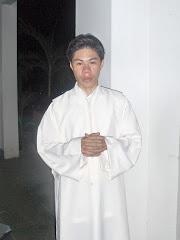~ 1860 ~
1) 05 January in Philadelphia, Pennsylvania (USA)
 JOHN NEPOMUCENE [JAN NEPOMUCKÝ] NEUMANN
JOHN NEPOMUCENE [JAN NEPOMUCKÝ] NEUMANN
professed priest, Redemptorists;
archbishop of Philadelphia;
founder, Sisters of Saint Francis of Philadelphia
born: 28 March 1811 in Prachatitz, Jihoceský kraj (Czech Republic)
competent diocese: Philadelphia/Ceské Budĕjovice
CCS protocol number: 855
type of cause: heroic virtues
opening of informative process: 1886
closing of informative process: 1888
decree on writings:
introduction of cause: 15 December 1895
opening of apostolic process: 25 October 1897
decree “non-cultu”: 28 June 1898
closing of apostolic process: 13 June 1902
decree on validity of informative and apostolic processes:
antepreparatory congregation: 16 May 1911
preparatory congregation: 08 April 1919
general congregation: 29 November 1921
promulgation of decree on heroic virtues: 11 December 1921
opening of informative process on first miracle for beatification:
closing of informative process on first miracle for beatification:
opening of informative process on second miracle for beatification:
closing of informative process on second miracle for beatification:
decree on validity of informative processes on miracles:
session of medical consultants:
antepreparatory congregation on miracles:
preparatory congregation on miracles:
general congregation on miracles:
promulgation of decree on miracles:
beatification: 13 October 1963
opening of cognitional process on miracle for beatification: 1971 (Philadelphia)
closing of cognitional process on miracle for beatification: 1971 (Philadelphia)
decree on validity of cognitional process on miracle: 26 October 1973
session of medical consultants:
commission of CCS officials and consultants: 01 June 1976
plenary session of CCS cardinals and bishops: 13 July 1976
papal confirmation of plenary session sentence:
promulgation of decree on miracle: 13 November 1976
perfecta ac diutina sanatione pueri Michaëlis Patricii Flanigan, annorum sex, ab incurabili sarcomate ab Ewing nuncupato dexterae tibiae, cum multiplici metastasi pulmonari bilaterali, et ascendentis partis maxillae sub finem mensis Decembris anni 1963 in valetudinarium Philadelphiense, vulgo appellatum Mercy Hospital
canonization: 19 June 1977
information: St. John Neumann Shrine, 1019 N. 5th St., Philadelphia, PA 19123, USA
Sisters of Saint Francis of Philadelphia, 609 S. Convent Road, Aston, PA 19014, USA
website:
2) 02 April in Padua (Italy)
 ELISABETTA VENDRAMINI
ELISABETTA VENDRAMINI
founder, Franciscan Elizabethan Sisters
born: 09 April 1790 in Bassano del Grappa, Vicenza (Italy)
competent diocese: Padua
CCS protocol number: 584
type of cause: heroic virtues
opening of diocesan inquiry:
closing of diocesan inquiry:
decree on writings: 02 April 1964
session of historical consultants: 10 March 1987
submission of Positio to CCS:
decree on validity of diocesan inquiry: 11 March 1988
congress of theological consultants: 28 June 1988
ordinary congregation of cardinals and bishops:
promulgation of decree on heroic virtues: 18 February 1989
opening of diocesan inquiry on miracle for beatification:
closing of diocesan inquiry on miracle for beatification:
decree on validity of diocesan inquiry on miracle: 21 April 1989
session of medical consultants: 15 November 1989
congress of theological consultants: 23 March 1990
ordinary congregation of cardinals and bishops: 19 June 1990
promulgation of decree on miracle: 10 July 1990
beatification: 04 November 1990
postulator: Fra Giovangiuseppe Califano, ofm
petitioner: Suore Francescane Elisabettine, Via Beato Pellegrino, 40, 35137 Padova, ITALY
website:
3) 15 April in Florence (Italy)
 ANNA MARIA FIORELLI LAPINI
ANNA MARIA FIORELLI LAPINI
widow; founder, Poor Daughters of the Holy Stigmata of Saint Francis (n.o.)
born: 27 May 1809 in Florence (Italy)
competent diocese: Florence
CCS protocol number: 137
type of cause: heroic virtues
opening of informative process:
closing of informative process:
introduction of cause: 23 January 1918
decree “non-cultu”: 12 June 1918
opening of apostolic process:
closing of apostolic process:
decree on validity of informative and apostolic processes: 16 July 1938
decree on writings: 03 December 1944
submission of Positio to CCS: 1995
session of historical consultants:
congress of theological consultants: 25 February 2003
ordinary congregation of cardinals and bishops:
promulgation of decree on heroic virtues: 12 April 2003
opening of diocesan inquiry on miracle for beatification:
closing of diocesan inquiry on miracle for beatification:
decree on validity of diocesan inquiry on miracle: 24 June 1994
session of medical consultants: 22 April 2004
postulator: Fra Giovangiuseppe Califano, ofm
petitioner: Povere Figlie delle Sacre Stimmate, Viale del Forte Trionfale, 26, 00135 Roma, ITALY
website:
4) 22 May in Verona (Italy)
 TEODORA CAMPOSTRINI
TEODORA CAMPOSTRINI
founder, Minim Sisters of Charity of Our Lady of Sorrows (n.o.)
born: 26 October 1788 in Verona (Italy)
competent diocese: Verona
CCS protocol number: 1036
type of cause: heroic virtues
opening of informative process:
closing of informative process:
decree on writings: 21 December 1968
introduction of cause:
decree “non-cultu”:
opening of apostolic process:
closing of apostolic process:
decree on validity of informative and apostolic processes:
submission of Positio to CCS:
session of historical consultants:
congress of theological consultants:
ordinary congregation of cardinals and bishops:
postulator:
petitioner: Sorelle Minime della Carità di Maria Addolorata, Via S. Maria in Organo, 2, 37129 Verona, ITALY
website:
5) 18 June in Zahleh, Al Biqā‘ (Lebanon)

EDOUARD BILLOTET AND 4 JESUIT COMPANIONS OF ZAHLÉ
EDOUARD BILLOTET
professed priest, Jesuits
born: 23 May 1812 in Villefrancon, Haute-Saône (France)
FERDINANDO BONACINA
professed religious, Jesuits
born: 07 April 1804 in Gavassetto, Reggio Emilia (Italy)
ELYĀS YŪNES (الياس يونس)
professed religious, Jesuits
born: 1830 in El Metn, Jabal Lubnān (Lebanon)
HABĪB MAKSŪD (ﺣﺒﻳﺐ ﻣﻜﺴﻮﺫ)
professed religious, Jesuits
born: 27 September 1810 in Zahleh, Al Biqā‘ (Lebanon)
ĀLFŪNS HAYDAR HUBAYSH (ألفونس حبيش حيدر)
professed religious, Jesuits
born: 31 May 1815 in Ghazīr, Kesrwan, Jabal Lubnān (Lebanon)
competent diocese: Alep of the Latins
CCS protocol number: 441
type of cause: martyrdom
opening of informative process: 12 October 1932
closing of informative process:
nihil obstat:
decree on validity of informative process:
submission of Positio to CCS:
session of historical consultants:
congress of theological consultants:
ordinary congregation of cardinals and bishops:
postulator:
petitioner: Pères Jésuites, Rue de l’Université Saint-Joseph, BP 166 775 – Achrafieh, Beyrouth, 110 2150 LEBANON
website:
6) 23 June in Turin (Italy)
 GIUSEPPE CAFASSO
GIUSEPPE CAFASSO
priest of the archdiocese of Turin
born: 15 January 1811 in Castelnuovo d’Asti (Italy)
competent diocese: Turin
CCS protocol number: 409
type of cause: heroic virtues
opening of informative process:
closing of informative process:
decree on writings:
introduction of cause: 23 May 1906
decree “non cultu”:
opening of apostolic process:
closing of apostolic process:
decree on validity of informative and apostolic processes:
antepreparatory congregation:
preparatory congregation:
general congregation:
promulgation of decree on heroic virtues: 27 February 1921
opening of informative process on first miracle for beatification:
closing of informative process on first miracle for beatification:
opening of informative process on second miracle for beatification:
closing of informative process on second miracle for beatification:
decree on validity of informative processes on miracles:
session of medical consultants:
antepreparatory congregation on miracles:
preparatory congregation on miracles:
general congregation on miracles:
promulgation of decree on miracles:
beatification: 03 May 1925
opening of informative process on first miracle for canonization:
closing of informative process on first miracle for canonization:
opening of informative process on second miracle for canonization:
closing of informative process on second miracle for canonization:
decree on validity of informative processes on miracles:
session of medical consultants:
antepreparatory congregation on miracles:
preparatory congregation on miracles:
general congregation on miracles:
promulgation of decree on miracles:
canonization: 22 June 1947
information: Santuario della Consolata, Via M. Adelaide, 2, 10122 Torino, ITALY
website:
7) 9-10 July in Damascus (Syria)


MANUEL RUIZ LÓPEZ AND 7 COMPANION MARTYRS
FROM THE FRANCISCAN FRIARS MINOR OF DAMASCUS
ALONG WITH FRANSĪS, ‘ABD AL-MU‛TĪ, AND RŪFAYĪLMASĀBKĪ
MANUEL RUIZ LÓPEZ
professed priest, Franciscan Friars Minor
born: 05 May 1804 in San Martín de Ollas, Burgos (Spain)
CARMELO BOLTA BAÑULS
professed priest, Franciscan Friars Minor
born: 29 March 1803 in Borjas, Gandía, Valencia (Spain)
ENGELBERT KOLLAND
professed priest, Franciscan Friars Minor
born: 21 September 1827 in Ramsau, Zell am See, Salzburg (Austria)
NICANOR ASCANIO DE SORIA
professed priest, Franciscan Friars Minor
born: 10 January 1814 in Villarejo de Salvanés, Madrid (Spain)
PEDRO SOLER MÉNDEZ
professed priest, Franciscan Friars Minor
born: 28 April 1827 in Lorca, Murcia (Spain)
NICOLÁS MARÍA ALBERCA TORRES
professed priest, Franciscan Friars Minor
born: 10 September 1830 in Aguilar de la Frontera, Córdoba (Spain)
FRANCISCO PINAZO PEÑALVER
professed religious, Franciscan Friars Minor
born: 26 August 1802 in Chopo, Alpuente, Valencia (Spain)
JUAN JACOBO FERNÁNDEZ y FERNÁNDEZ
professed religious, Franciscan Friars Minor
born: 25 July 1808 in Moire, Carballeda, Orense (Spain)
FRANSĪS MASĀBKĪ (ﻲﻗﺑﺎﺳﻣ ﺱﻳﺳﻧﺮﻓ) (*)
layperson of the archeparchy of Damascus of the Maronites; married
born: ? in Damascus (Syria)
‘ABD AL-MU‛TĪ MASĀBKĪ (ﻲﻗﺑ ﺎﺳﻣ ﻲﺗﻣﻟﺍ ﺩﺒﻋ) (*)
layperson of the archeparchy of Damascus of the Maronites; married
born: ? in Damascus (Syria)
RŪFAYĪL MASĀBKĪ (ﻲﻗﺑﺎﺳﻣ ﻝﻳﺌﺎﻓﻭﺮ) (*)
layperson of the archeparchy of Damascus of the Maronites
born: ? in Damascus (Syria)
competent diocese: Damascus of the Latins/Damascus of the Maronites
CCS protocol number: 1740
type of cause: martyrdom
opening of informative process:
closing of informative process:
introduction of cause: 17 December 1885
opening of apostolic process:
closing of apostolic process:
decree on validity of informative and apostolic processes: 11 June 1924
decree on writings: 23 July 1924
decree “non cultu”: 23 July 1924
antepreparatory congregation: 18 August 1925
preparatory congregation: 19 January 1926
general congregation: 17 April 1926
promulgation of decree on martyrdom: 02 May 1926; 07 October 1926 (*)
beatification: 10 October 1926
postulator: Fra Giovangiuseppe Califano, ofm
petitioner: St. Saviour’s Monastery, St. Francis St., 1, P.O. Box 186, 91001 Jerusalem, ISRAEL
[1895: Salvatore Lilli from Cappadocia and 7 Armenian Companion Martyrs]
website:
8) 31 July in Zula, Semenawi Keih Bahri (Eritrea)
 GIUSTINO DE JACOBIS
GIUSTINO DE JACOBIS
professed priest, Vincentians;
apostolic vicar of Abyssinia (now Addis Ababa)
born: 09 October 1800 in San Fele, Potenza (Italy)
competent diocese: Addis Ababa
CCS protocol number: 9
type of cause: heroic virtues
opening of informative process: 1891
closing of informative process: 1894
decree on writings: 01 May 1902
introduction of cause: 13 July 1904
decree “non cultu”: 28 June 1905
opening of apostolic process: 1904
closing of apostolic process: 1913
decree on validity of informative and apostolic processes: 09 December 1915
antepreparatory congregation: 02 June 1931
preparatory congregation: 09 April 1935
general congregation: 16 July 1935
promulgation of decree on heroic virtues: 28 July 1935
opening of informative process on first miracle for beatification:
closing of informative process on first miracle for beatification:
opening of informative process on second miracle for beatification:
closing of informative process on second miracle for beatification:
decree on validity of informative processes on miracles:
session of medical consultants:
antepreparatory congregation on miracles:
preparatory congregation on miracles:
general congregation on miracles:
promulgation of decree on miracles:
beatification: 25 June 1939
opening of cognitional process on miracle for beatification:
closing of cognitional process on miracle for beatification:
decree on validity of cognitional process on miracle:
session of medical consultants:
commission of CCS officials and consultants:
plenary session of CCS cardinals and bishops:
papal confirmation of plenary session sentence:
promulgation of decree on miracle:
canonization: 26 October 1975
information: St. Justin de Jacobis v. Provincial House, P.O. Box 364, Asmara, ERITREA
website:
9) 10 August in Agrigento (Italy)
 ROSARIO ADDUCA
ROSARIO ADDUCA
professed religious, Redemptorists
born: 06 October 1793 in Maschito, Potenza (Italy)
competent diocese: Agrigento
CCS protocol number:
type of cause: heroic virtues
nihil obstat:
opening of informative process:
closing of informative process:
postulator: Rev. Antonio Marrazzo, cssr
petitioner: Associazione Pro Loco “Fra Rosario Adduca”, Via Dante, 25, 85020 Agrigento, ITALY
website:
10) 11 October in Rome (Italy)
 JÓZEFA KARSKA (MARIA JÓZEFA OF JESUS CRUCIFIED)
JÓZEFA KARSKA (MARIA JÓZEFA OF JESUS CRUCIFIED)
cofounder, Sisters of the Immaculate Conception of the Blessed Virgin
born: 07 April 1823 in Olchowiec, Lubuskie (Poland)
competent diocese: Warsaw
CCS protocol number: 580
type of cause: heroic virtues
opening of informative process:
closing of informative process:
nihil obstat:
decree on validity of informative process:
submission of Positio to CCS:
session of historical consultants:
congress of theological consultants:
ordinary congregation of cardinals and bishops:
postulator: Fra Zbigniew Suchecki, ofmconv
petitioner: [see 1911:Marcelina Darowska (Maria Marcelina of the Immaculate Conception)]
website:
Note: The decree to translate the transumptum into French was issued on 06 November 1970.
11) 29 October in Secondigliano, Naples (Italy)
 GAETANO ERRICO
GAETANO ERRICO
priest of the archdiocese of Naples;
founder, Missionaries of the Sacred Hearts of Jesus and Mary
born: 19 October 1791 in Secondigliano, Naples (Italy)
competent diocese: Naples
CCS protocol number: 818
type of cause: heroic virtues
opening of informative process:
closing of informative process:
decree on writings:
introduction of cause: 18 December 1884
decree “non cultu”:
opening of apostolic process:
closing of apostolic process:
decree on validity of informative and apostolic processes:
antepreparatory congregation:
preparatory congregation:
general congregation:
promulgation of decree on heroic virtues: 04 October 1974
opening of diocesan inquiry on miracle for beatification: 07 July 1999
closing of diocesan inquiry on miracle for beatification: 15 October 1999
decree on validity of diocesan inquiry on miracle: 10 December 1999
session of medical consultants: 30 March 2000
congress of theological consultants: 03 July 2000
ordinary congregation of cardinals and bishops: 09 January 2000
promulgation of decree on miracle: 24 April 2000
beatification: 14 April 2002
opening of diocesan inquiry on miracle for canonization: 10 November 2004 (archdiocese of Naples)
closing of diocesan inquiry on miracle for canonization: 10 October 2005 (archdiocese of Naples)
decree on validity of diocesan inquiry on miracle: 20 January 2006
session of medical consultants: 05 October 2006
congress of theological consultants: 19 December 2006
ordinary congregation of cardinals and bishops: 05 June 2007
promulgation of decree on miracle: 06 July 2007
spontanea sanatione dominae Annae Russo, anno 2003 in Secundiliano, a "sterilità primaria da anavulazione cronica, resistenete alla terapia medica chirurgica, in paziente con utero unicorene-unicolle rudimentale, esitata in gravidanza insorta spontaneamente e proseguita con evoluzione fisiologica con parto pretermine all 36a settimana, senza alcuna trattamento."
canonization: 12 October 2008
information: Missionari dei Sacri Cuori di Gesù e di Maria, Via dei Falegnami, 23, 00186 Roma, ITALY
Missionari dei Sacri Cuori di Gesù e di Maria, Via Dante, 2, 80144 Secondigliano (NA), ITALY
[1898: Raffaele Mennella]
website: www.msscc.it
12) 03 December in Trent (Italy)
 JOHANN NEPOMUK VON TSCHIDERER VON GLEIFHEIM
JOHANN NEPOMUK VON TSCHIDERER VON GLEIFHEIM
bishop of Trent
born: 15 April 1777 in Bolzano (Italy)
competent diocese: Trent
CCS protocol number: 404
type of cause: heroic virtues
opening of informative process: 1873
closing of informative process: 1877
decree on writings: 16 April 1885
introduction of cause: 27 May 1886
decree “non cultu”: 14 March 1890
opening of apostolic process: 1890
closing of apostolic process: 1896
decree on validity of informative and apostolic processes: 03 July 1898
antepreparatory congregation: 21 February 1905
preparatory congregation: 1937
general congregation: 18 June 1943
promulgation of decree on heroic virtues: 14 July 1968
opening of informative process on miracle for beatification: 1908
closing of informative process on miracle for beatification: 1908
decree on validity of diocesan inquiry on miracle: 27 September 1908
session of medical consultants: 01 April 1992
congress of theological consultants: 19 June 1992
ordinary congregation of cardinals and bishops: 03 November 1992
promulgation of decree on miracle: 21 December 1992
beatification: 29 April 1995
postulator:
petitioner: Arcidiocesi di Trento, P.za Fierra 1, 38100 Trento, ITALY
website:
13) 21 December in Koblenz (Germany)
 PETER FRIEDHOFEN
PETER FRIEDHOFEN
founder, Brothers of Mercy of Our Lady of Perpetual Help
born: 25 February 1819 in Weitersburg, Vallendar (Germany)
competent diocese: Trier
CCS protocol number: 401
type of cause: heroic virtues
opening of informative process: 26 March 1926
closing of informative process:
session of historical consultants: 06 May 1981
submission of Positio to CCS: 1983
congress of theological consultants: 03 May 1983
ordinary congregation of cardinals and bishops: 05 July 1983
promulgation of decree on heroic virtues: 24 September 1983
opening of diocesan inquiry on miracle for beatification:
closing of diocesan inquiry on miracle for beatification:
decree on validity of diocesan inquiry on miracle: 18 February 1983
session of medical consultants: 06 April 1984
congress of theological consultants: 17 July 1984
ordinary congregation of cardinals and bishops: 20 November 1984
promulgation of decree on miracle: 14 December 1984
beatification: 23 June 1985
postulator:
petitioner: Barmherzige Brüder von Maria-Hilf, Nordallee 1, 54292 Trier, GERMANY
website: www.brueder-von-maria-hilf.de
14) 26 December in Ploërmel, Morbihan (France)
 JEAN-MARIE ROBERT DE LA MENNAIS
JEAN-MARIE ROBERT DE LA MENNAIS
priest of the diocese of Vannes;
founder, Brothers of Christian Instruction of Ploërmel
and Daughters of Providence of Saint-Brieuc
born: 08 September 1780 Saint-Malo, Ille-et-Vilaine (France)
competent diocese: Vannes
CCS protocol number: 426
type of cause: heroic virtues
opening of informative process: 07 October 1899
closing of informative process: 29 August 1901
decree on writings: 11 December 1907
introduction of cause: 22 March 1911
opening of apostolic process: 31 July 1912
decree “non cultu”: 10 March 1915
closing of apostolic process: 1927
decree on validity of informative and apostolic processes: 05 June 1936
antepreparatory congregation: 23 July 1946
preparatory congregation: 25 May 1965
general congregation: 21 June 1966
promulgation of decree on heroic virtues: 15 December 1966
opening of diocesan inquiry on miracle for beatification: 13 November 2009 (archdiocese of Buenos Aires)
closing of diocesan inquiry on miracle for beatification: 17 December 2009 (archdiocese of Buenos Aires)
decree on validity of diocesan inquiry on miracle:
postulator: Bro. Delfín López, ficp
petitioner: Frères de l’Instruction Chrétienne de Ploërmel, 1 bd Foch, BP 35, 56801 Ploërmel, FRANCE
Filles de la Providence de Saint-Brieuc, 36, ave. de Fontainebleau, 94270 Le Kremlin-Bicêtre, FRANCE
website: www.lamennais.org













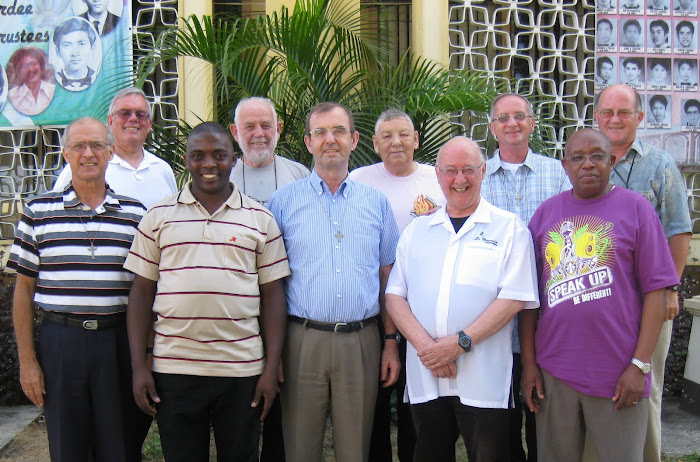

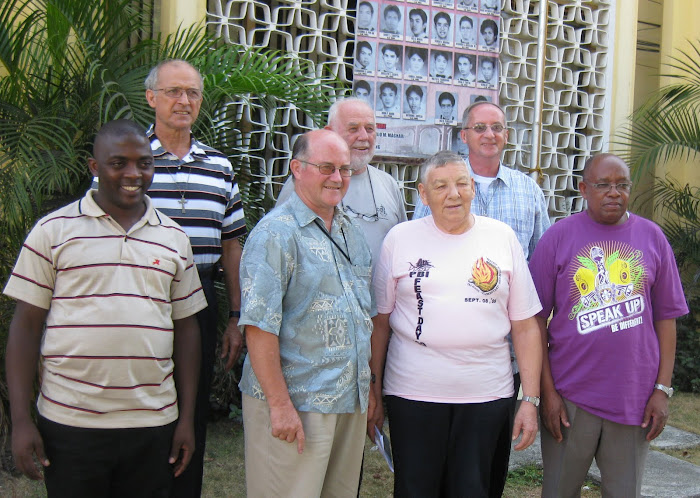

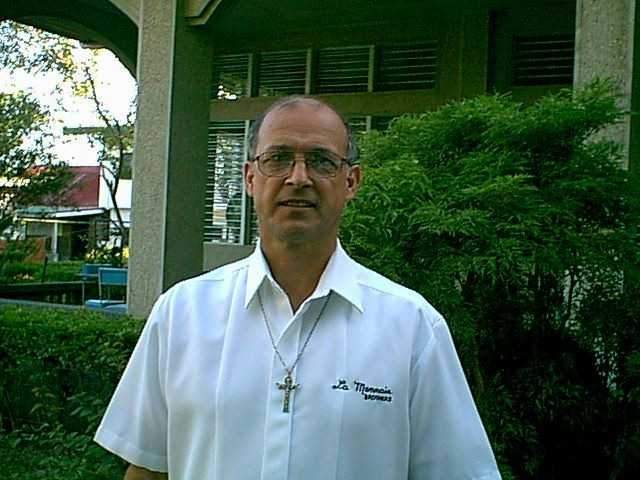



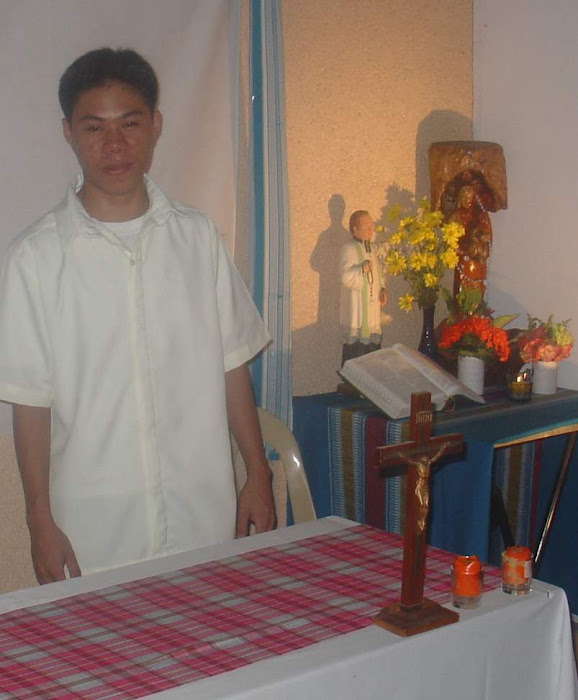

GDU.jpg)































.JPG)


.JPG)


-2.JPG)

.JPG)
.JPG)
.JPG)






.JPG)
.JPG)








